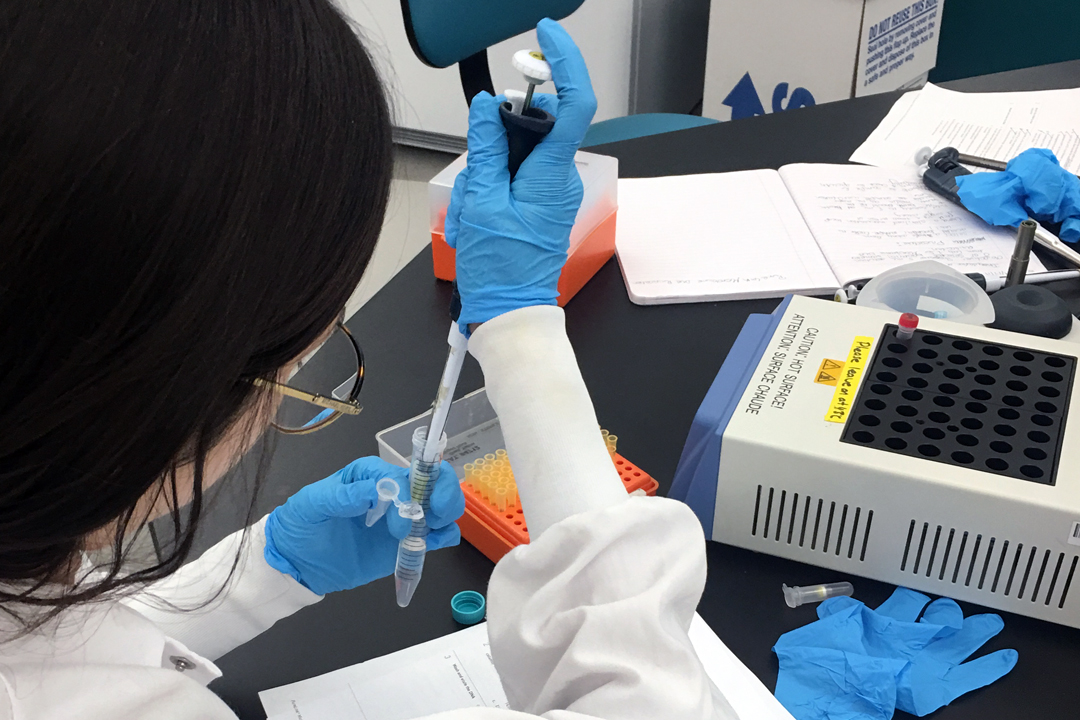Precision medicine
Real Life Science: Bioinformatics and Computational Biology
RIT undergraduate student in the Thomas H. Gosnell School of Life Sciences extracts genomic DNA to facilitate next-generation sequencing.
Bioinformatics is the intersection of biology and computer science. Biology and computing are combined to analyze big data collected by the health industry to discover, diagnose, and treat a wide range of medical conditions, which is why you’ll find bioinformaticians at the forefront of disease epidemics. Bioinformatics is used to predict the structures of new proteins that have yet to be characterized to facilitate drug development. While clinicians and medical care workers are tirelessly treating patients, researchers are diligently working to develop new testing and treatment options.
Bioinformaticians also play a role in “precision medicine,” which is an emerging approach for disease treatment and prevention. It helps doctors and researchers predict more accurately what strategies for a particular disease will work in which groups of people based on genetic, environmental, and lifestyle factors of the patient. This is different from a “one-size-fits-all” approach to treatments developed for the average person.
“Precision medicine was the topic of a thesis project by one of our bioinformatics students, Spencer Richman” said RIT professor Gary Skuse. “During his project, Spencer applied computational techniques to mine medical and scientific literature to identify interactions among molecules within cells that may be responsible for some chronic illnesses.”
Now more than ever pharmaceutical companies, hospitals, and research institutions are going to need bioinformaticians to analyze data related to disease epidemics. Rapid analysis of this data is essential to better understanding viral outbreaks and developing treatments for them. Fortunately, the work of a bioinformatician can be done remotely. As long as you have a computer and an internet connection, the information flows and analysis can continue.
RIT is preparing the next generation of bioinformaticians at the Thomas H. Gosnell School of Life Sciences.









